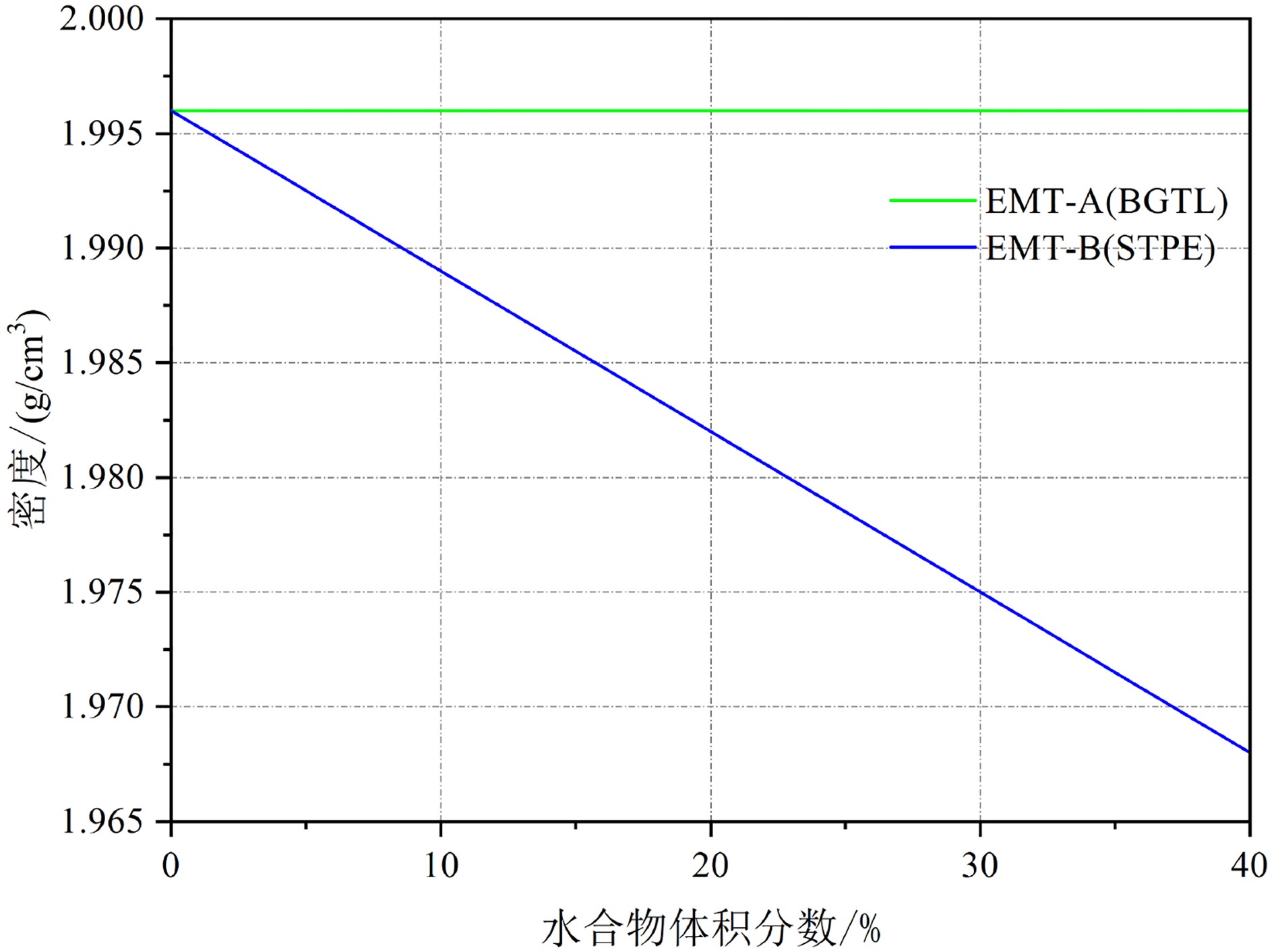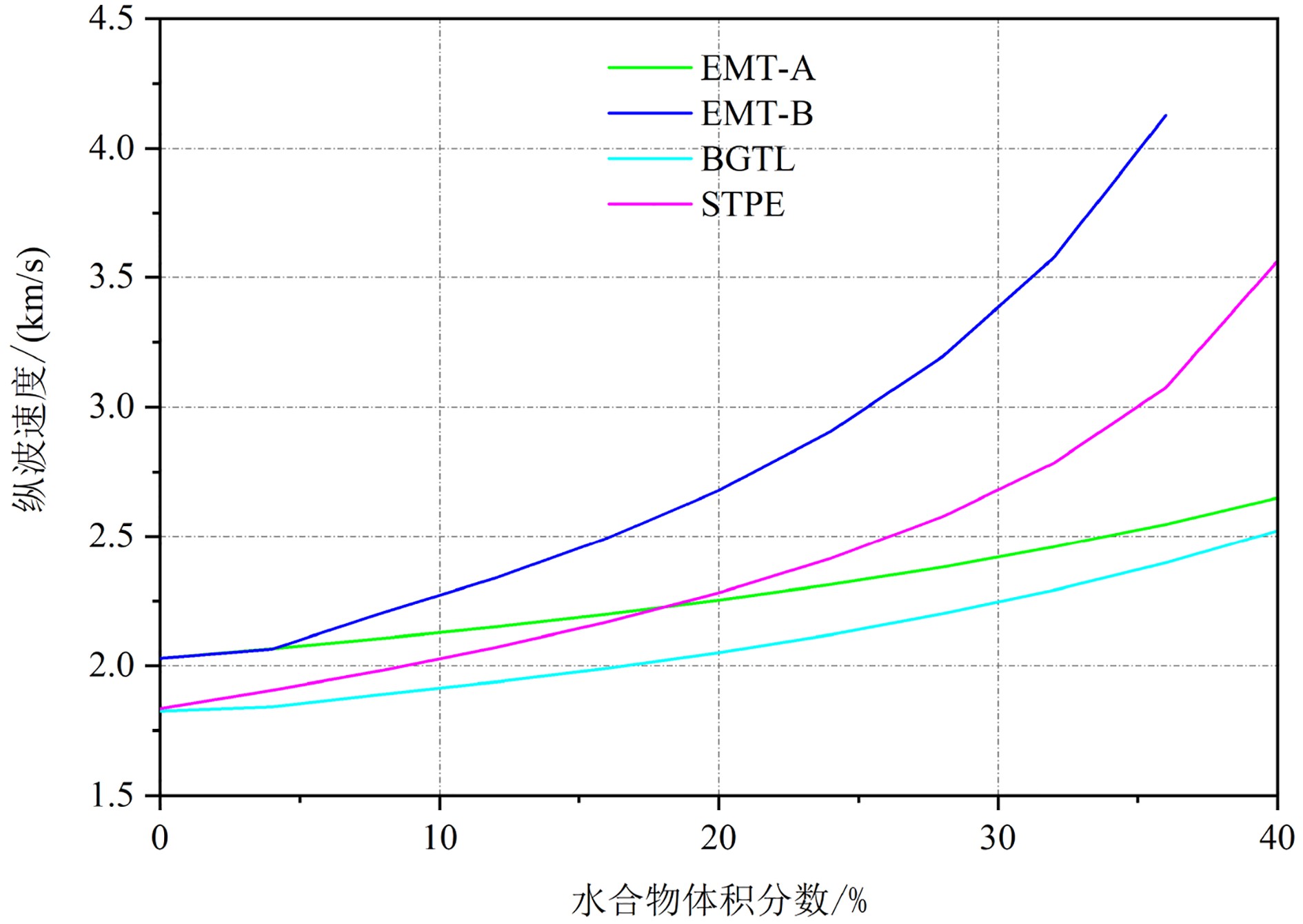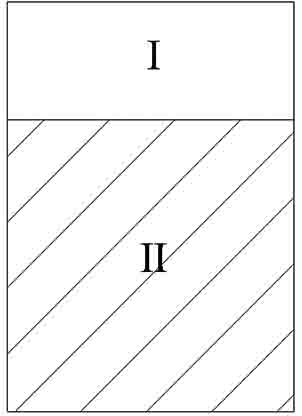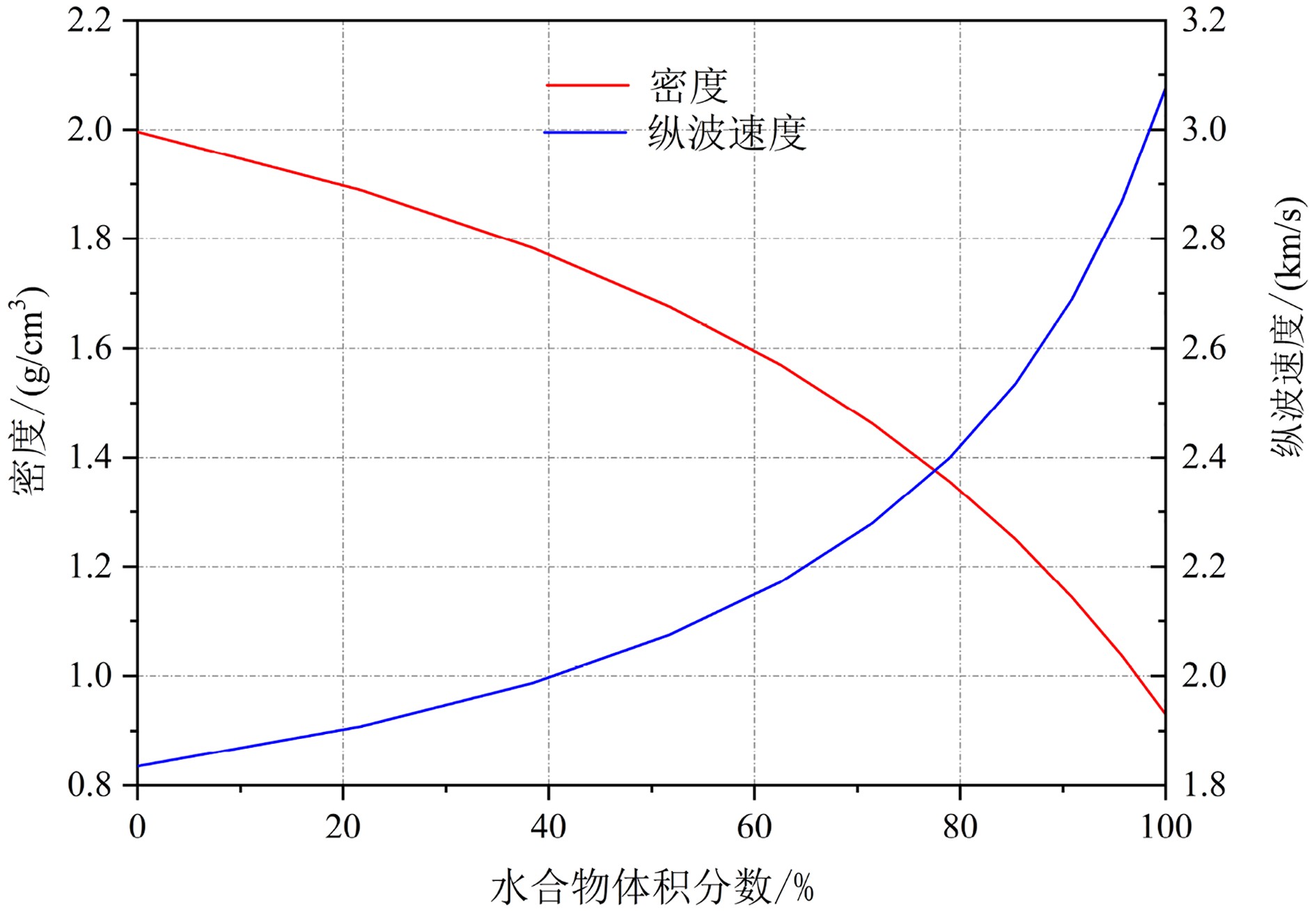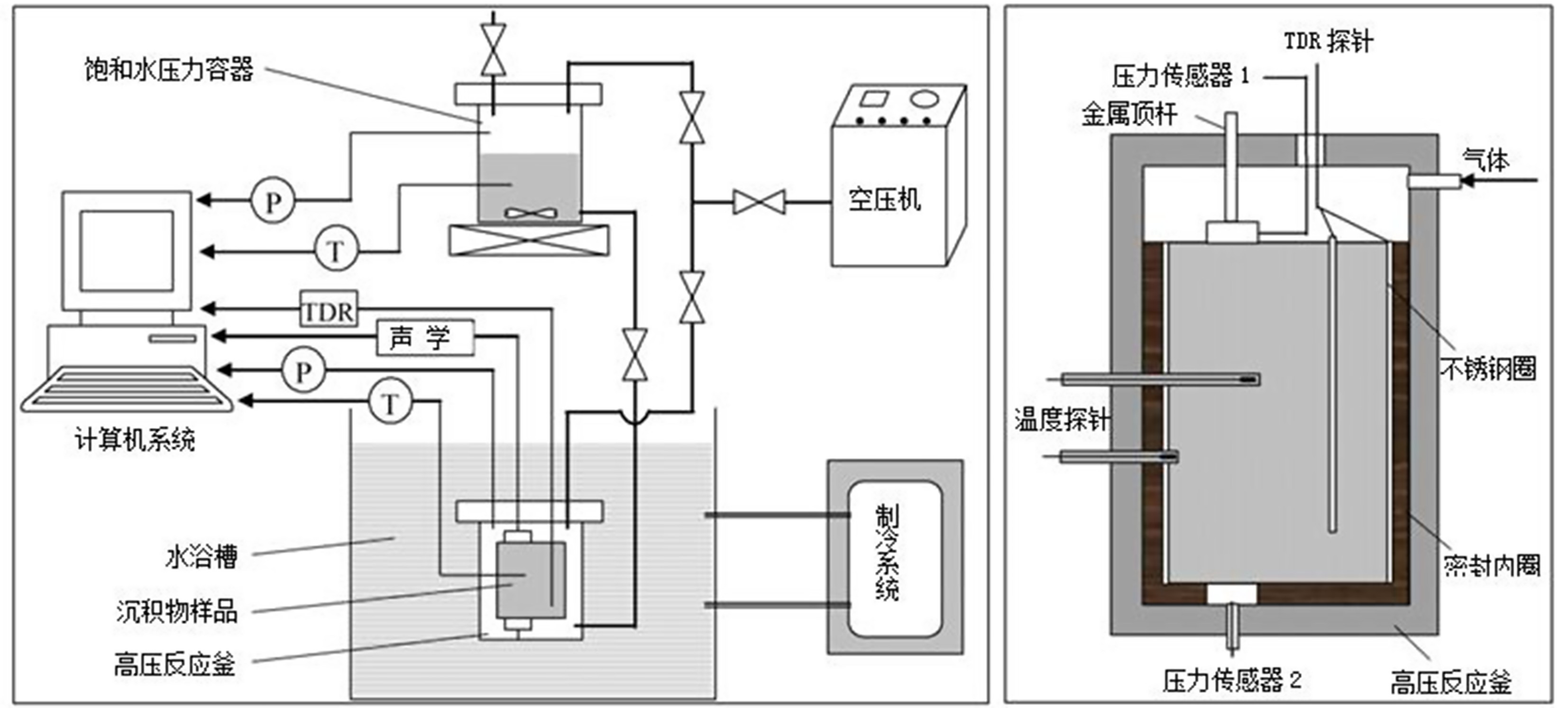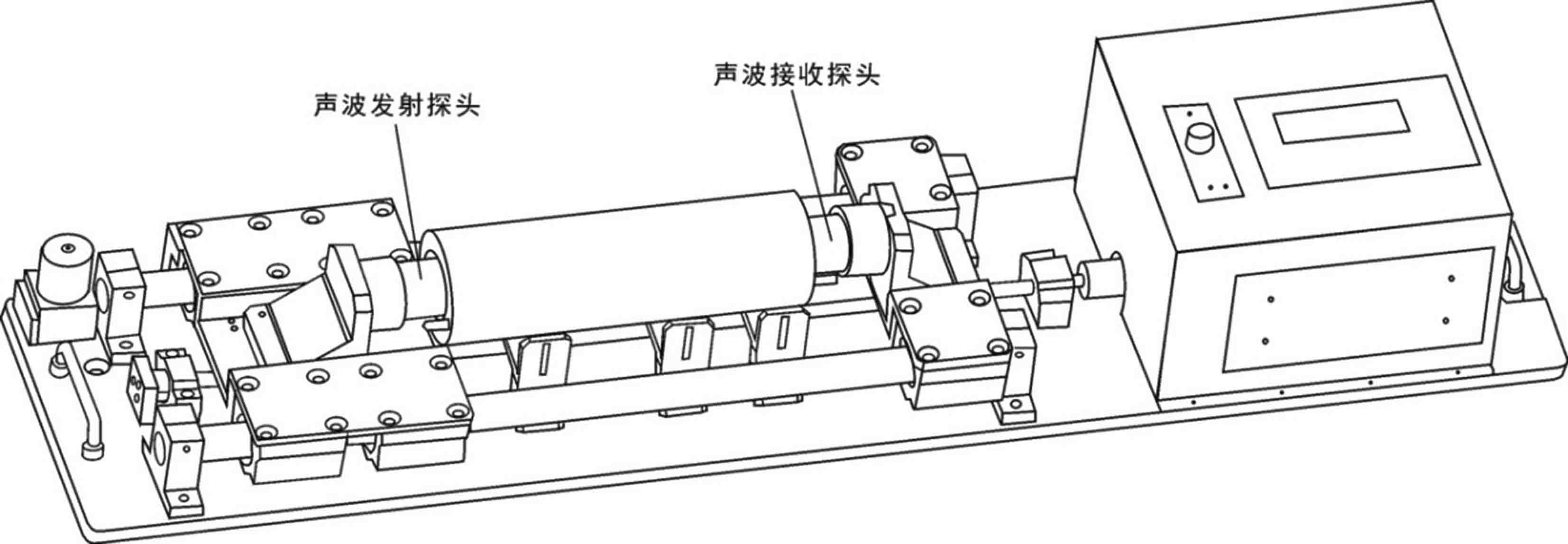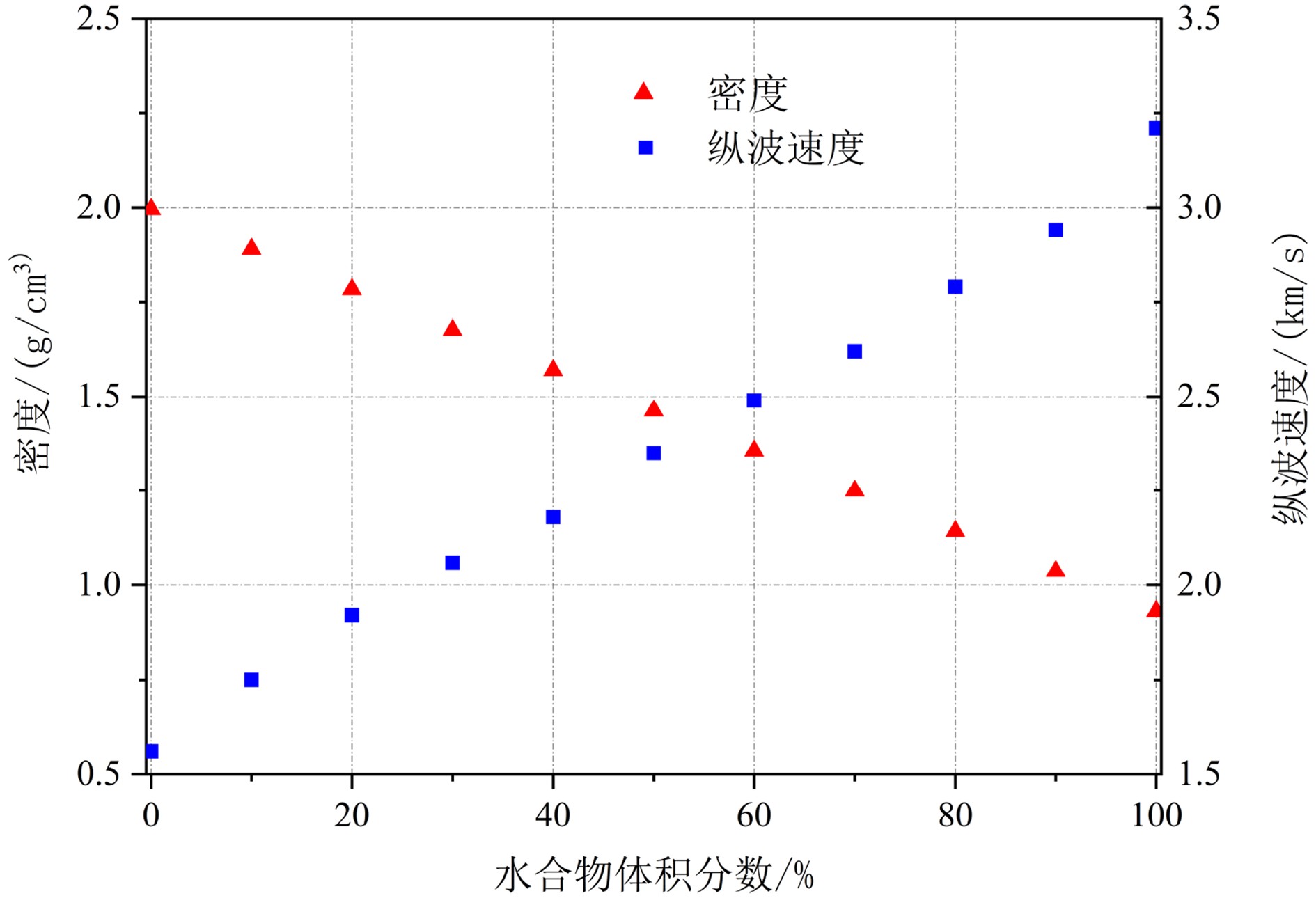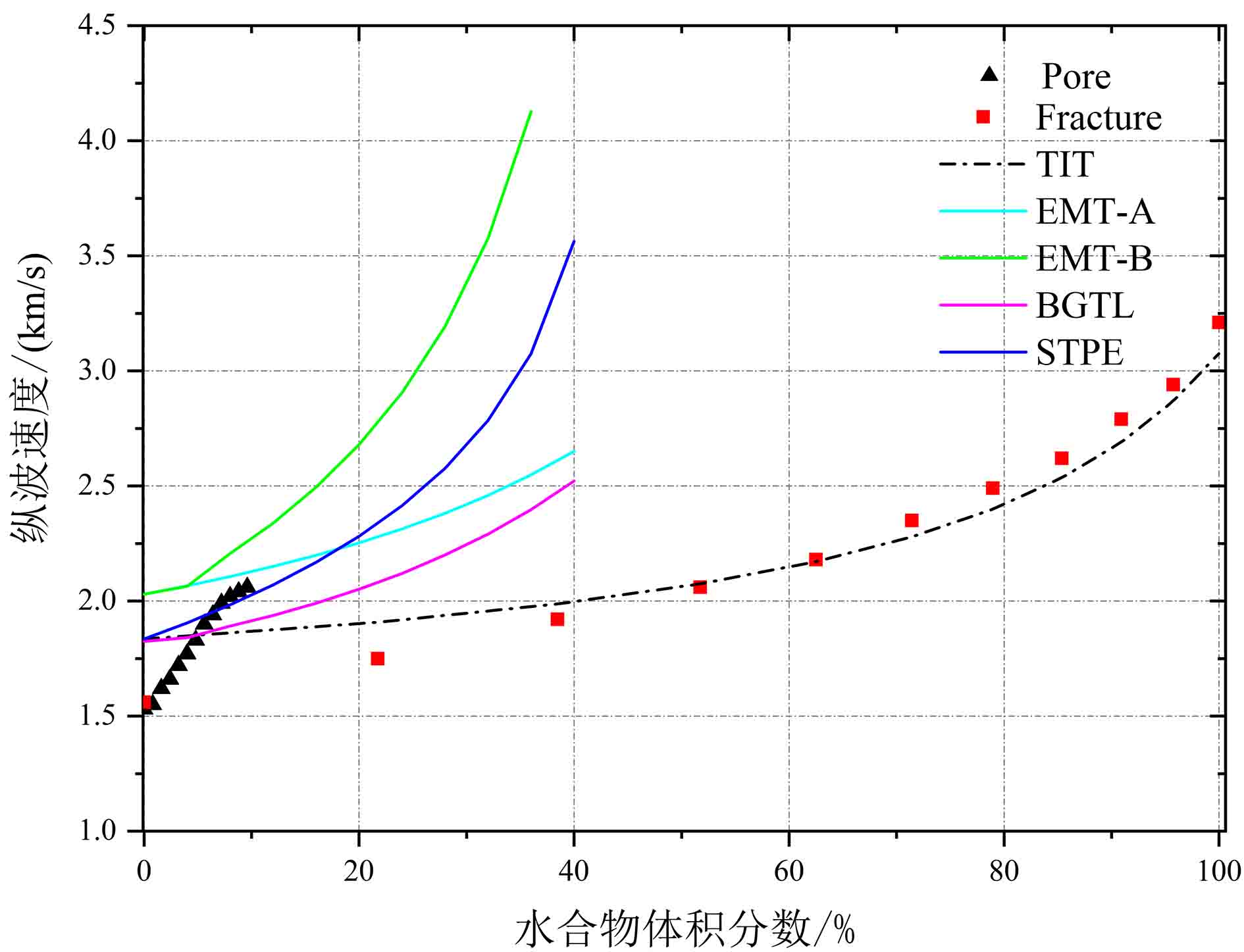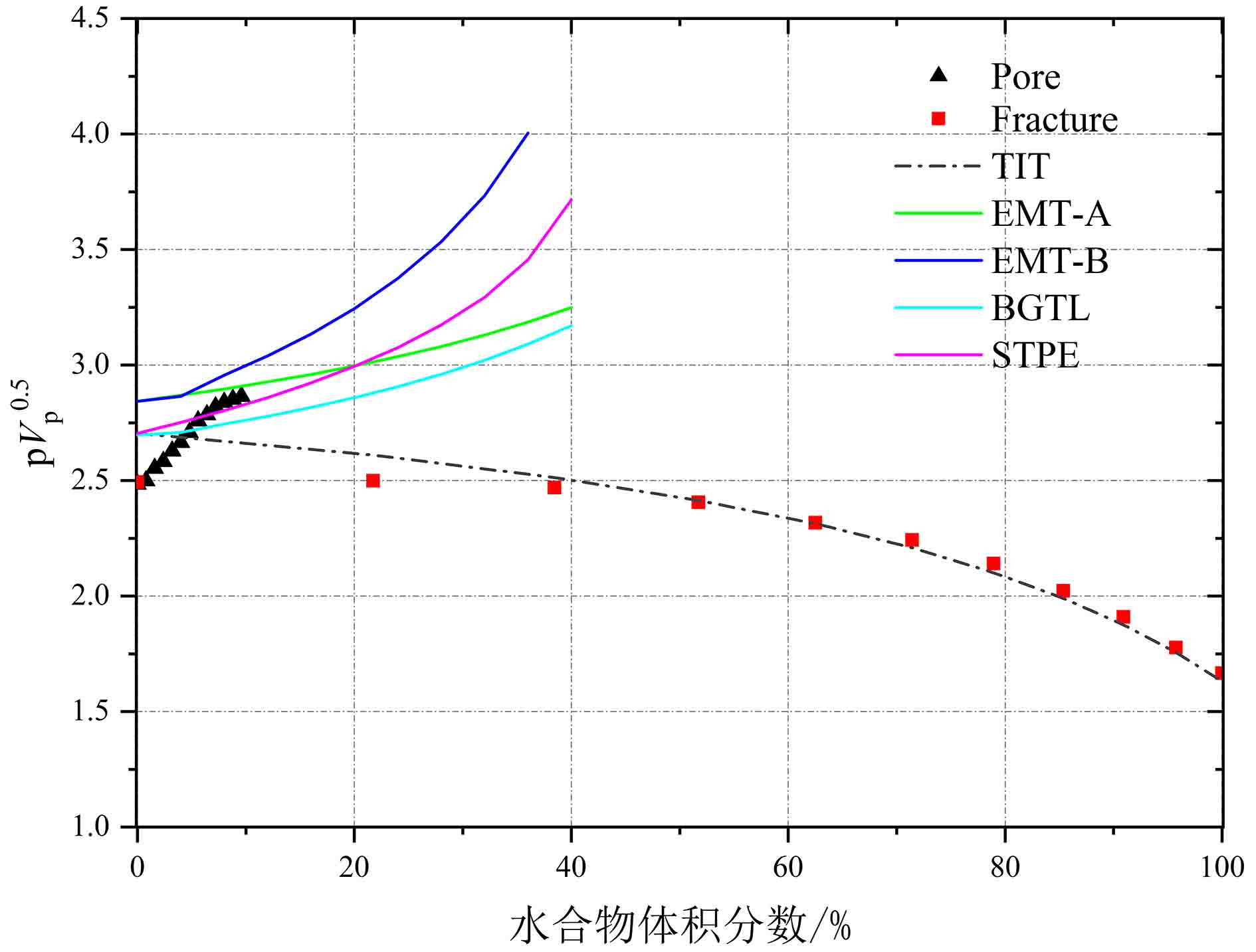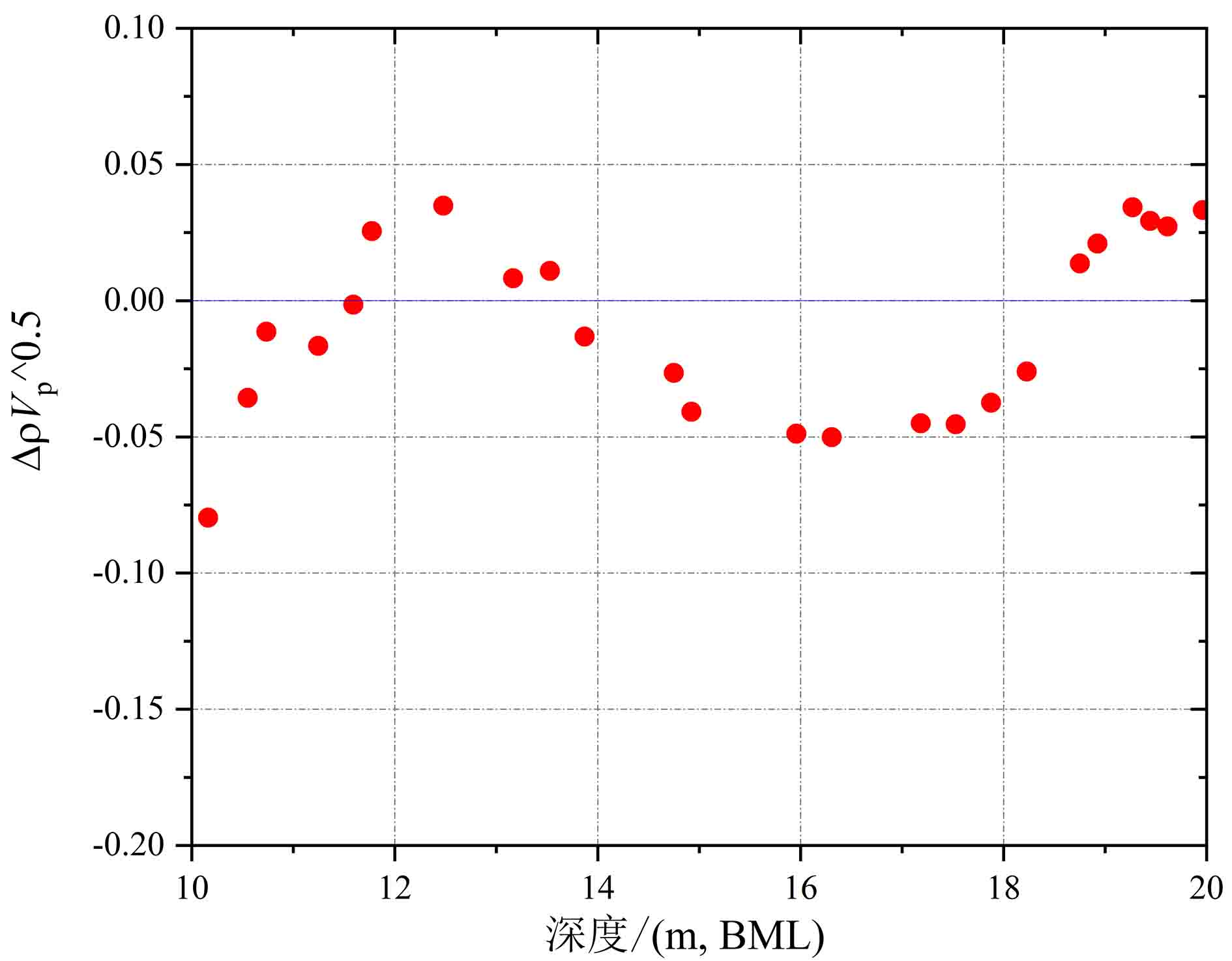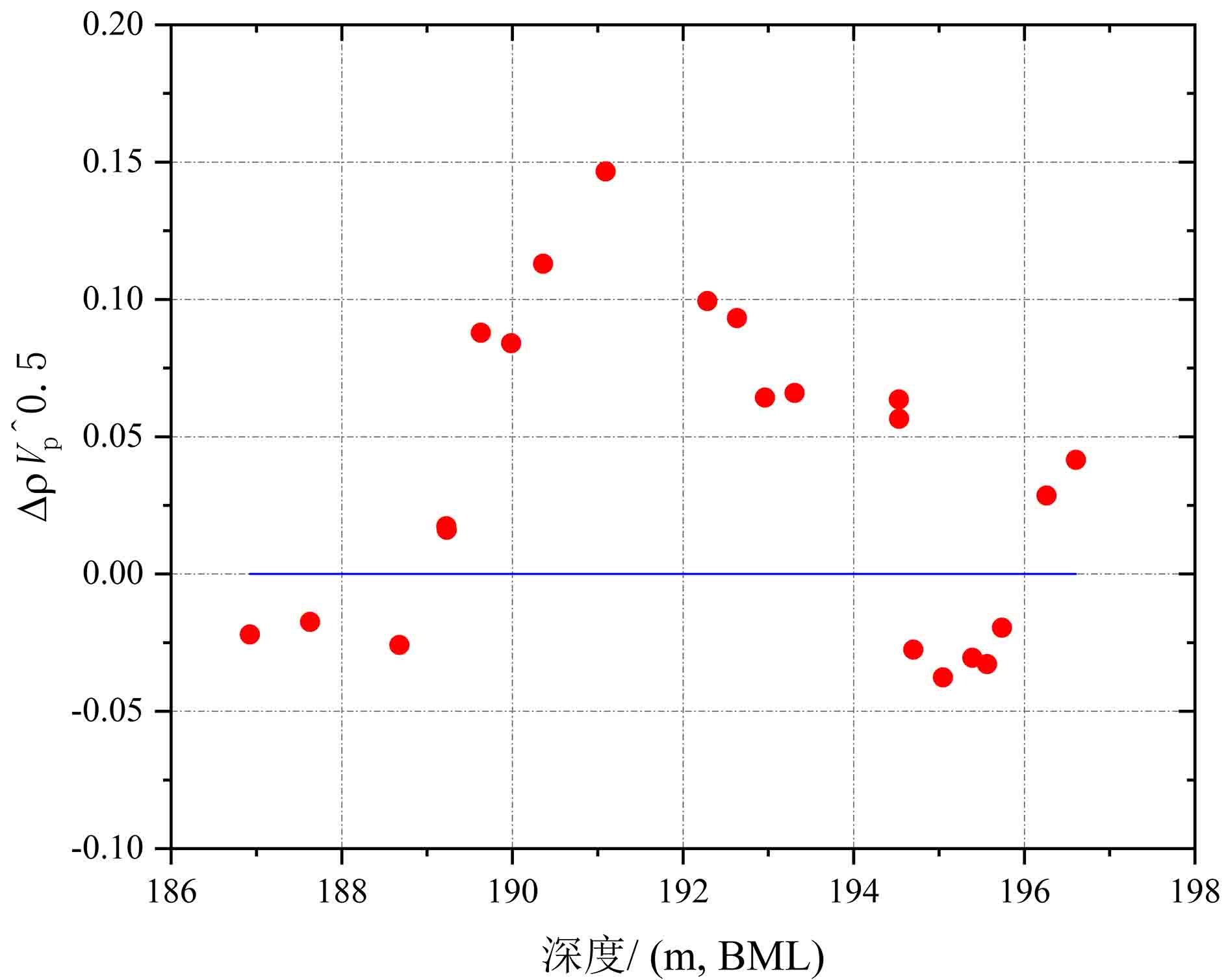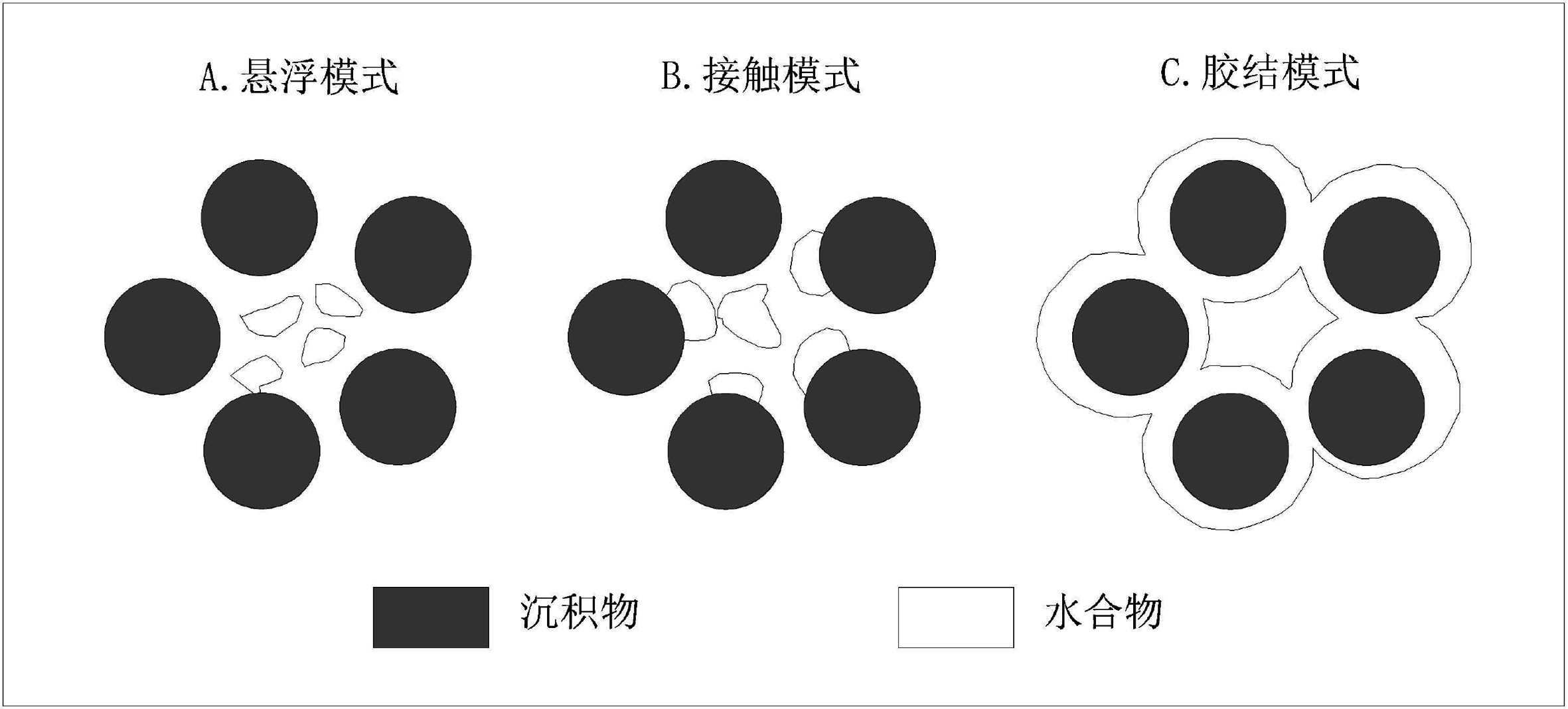Identification of pore-filling and fracture-filling hydrate by petrophysical simulation and acoustic experiment
-
摘要:
孔隙充填和裂隙充填是自然界中水合物赋存的两种基本形态,其类型判别对储量评价、钻井安全以及环境评估均具有重要影响。本文模拟南海孔隙充填和裂隙充填两种类型水合物储层,利用岩石物理模型和声学模拟实验获取声波速度和密度,对两种类型的识别方法进行了探索。结果显示,孔隙充填和裂隙充填型水合物沉积体系的纵波速度都随水合物体积分数的增大而增大,密度都随水合物体积分数增大而减小。将速度与密度参数结合计算两种类型水合物阻抗和
< span class="inline-formula-span" > < span class="inline-formula-span" > < span class="inline-formula-span" > < span class="inline-formula-span" > < span class="inline-formula-span" > < span class="inline-formula-span" > < span class="inline-formula-span" > $\rho {\sqrt V _{\rm{p}}}$ < /span > < img text_id='' class='formula-img' style='display:none;' src='2019122501_M5.png'/ > < /span > < img text_id='' class='formula-img' style='display:none;' src='2019122501_M4.png'/ > < /span > < img text_id='' class='formula-img' style='display:none;' src='2019122501_M3.png'/ > < /span > < img text_id='' class='formula-img' style='display:none;' src='2019122501_M2.png'/ > < /span > < img text_id='' class='formula-img' style='display:none;' src='2019122501_M1.png'/ > < /span > < img text_id='' class='formula-img' style='display:none;' src='2019122501_M1.png'/ > < /span > < img text_id='' class='formula-img' style='display:none;' src='2019122501_M1.png'/ > < span class="inline-formula-span" > < span class="inline-formula-span" > < span class="inline-formula-span" > < span class="inline-formula-span" > < span class="inline-formula-span" > < span class="inline-formula-span" > < span class="inline-formula-span" > $\rho {\sqrt V _{\rm{p}}}$ < /span > < img text_id='' class='formula-img' style='display:none;' src='2019122501_M5.png'/ > < /span > < img text_id='' class='formula-img' style='display:none;' src='2019122501_M4.png'/ > < /span > < img text_id='' class='formula-img' style='display:none;' src='2019122501_M3.png'/ > < /span > < img text_id='' class='formula-img' style='display:none;' src='2019122501_M2.png'/ > < /span > < img text_id='' class='formula-img' style='display:none;' src='2019122501_M1.png'/ > < /span > < img text_id='' class='formula-img' style='display:none;' src='2019122501_M1.png'/ > < /span > < img text_id='' class='formula-img' style='display:none;' src='2019122501_M1.png'/ > < span class="inline-formula-span" > < span class="inline-formula-span" > < span class="inline-formula-span" > < span class="inline-formula-span" > < span class="inline-formula-span" > < span class="inline-formula-span" > < span class="inline-formula-span" > $\rho {\sqrt V _{\rm{p}}}$ < /span > < img text_id='' class='formula-img' style='display:none;' src='2019122501_M5.png'/ > < /span > < img text_id='' class='formula-img' style='display:none;' src='2019122501_M4.png'/ > < /span > < img text_id='' class='formula-img' style='display:none;' src='2019122501_M3.png'/ > < /span > < img text_id='' class='formula-img' style='display:none;' src='2019122501_M2.png'/ > < /span > < img text_id='' class='formula-img' style='display:none;' src='2019122501_M1.png'/ > < /span > < img text_id='' class='formula-img' style='display:none;' src='2019122501_M1.png'/ > < /span > < img text_id='' class='formula-img' style='display:none;' src='2019122501_M1.png'/ > < span class="inline-formula-span" > < span class="inline-formula-span" > < span class="inline-formula-span" > < span class="inline-formula-span" > < span class="inline-formula-span" > < span class="inline-formula-span" > < span class="inline-formula-span" > $\rho {\sqrt V _{\rm{p}}}$ < /span > < img text_id='' class='formula-img' style='display:none;' src='2019122501_M5.png'/ > < /span > < img text_id='' class='formula-img' style='display:none;' src='2019122501_M4.png'/ > < /span > < img text_id='' class='formula-img' style='display:none;' src='2019122501_M3.png'/ > < /span > < img text_id='' class='formula-img' style='display:none;' src='2019122501_M2.png'/ > < /span > < img text_id='' class='formula-img' style='display:none;' src='2019122501_M1.png'/ > < /span > < img text_id='' class='formula-img' style='display:none;' src='2019122501_M1.png'/ > < /span > < img text_id='' class='formula-img' style='display:none;' src='2019122501_M1.png'/ > < span class="inline-formula-span" > < span class="inline-formula-span" > < span class="inline-formula-span" > < span class="inline-formula-span" > < span class="inline-formula-span" > < span class="inline-formula-span" > < span class="inline-formula-span" > $\rho {\sqrt V _{\rm{p}}}$ < /span > < img text_id='' class='formula-img' style='display:none;' src='2019122501_M5.png'/ > < /span > < img text_id='' class='formula-img' style='display:none;' src='2019122501_M4.png'/ > < /span > < img text_id='' class='formula-img' style='display:none;' src='2019122501_M3.png'/ > < /span > < img text_id='' class='formula-img' style='display:none;' src='2019122501_M2.png'/ > < /span > < img text_id='' class='formula-img' style='display:none;' src='2019122501_M1.png'/ > < /span > < img text_id='' class='formula-img' style='display:none;' src='2019122501_M1.png'/ > < /span > < img text_id='' class='formula-img' style='display:none;' src='2019122501_M1.png'/ > Abstract:Pore-filling and fracture-filling are two of the basic occurrences of natural gas hydrates in nature. To discriminate the type of gas hydrate is critically important for resource assessment, drilling safety and environment evaluation. In this paper, simulation experiment was carried out for the pore-filling and fracture-filling hydrate reservoirs in the South China Sea. The acoustic velocity and density of the two kinds of hydrate are obtained by petrophysical simulation and acoustic experiment simulation. The results suggest that the P wave velocity of the depositional mediums containing pore-filling and fracture-filling hydrate tends to increase with the volume fraction of hydrate, while the density decreases. Furthermore, we tested the impedance and the
< span class="inline-formula-span" > < span class="inline-formula-span" > < span class="inline-formula-span" > < span class="inline-formula-span" > < span class="inline-formula-span" > < span class="inline-formula-span" > < span class="inline-formula-span" > $\rho {\sqrt V _{\rm{p}}}$ < /span > < img text_id='' class='formula-img' style='display:none;' src='2019122501_M10.png'/ > < /span > < img text_id='' class='formula-img' style='display:none;' src='2019122501_M9.png'/ > < /span > < img text_id='' class='formula-img' style='display:none;' src='2019122501_M8.png'/ > < /span > < img text_id='' class='formula-img' style='display:none;' src='2019122501_M7.png'/ > < /span > < img text_id='' class='formula-img' style='display:none;' src='2019122501_M6.png'/ > < /span > < img text_id='' class='formula-img' style='display:none;' src='2019122501_M6.png'/ > < /span > < img text_id='' class='formula-img' style='display:none;' src='2019122501_M6.png'/ > < span class="inline-formula-span" > < span class="inline-formula-span" > < span class="inline-formula-span" > < span class="inline-formula-span" > < span class="inline-formula-span" > < span class="inline-formula-span" > < span class="inline-formula-span" > $\rho {\sqrt V _{\rm{p}}}$ < /span > < img text_id='' class='formula-img' style='display:none;' src='2019122501_M10.png'/ > < /span > < img text_id='' class='formula-img' style='display:none;' src='2019122501_M9.png'/ > < /span > < img text_id='' class='formula-img' style='display:none;' src='2019122501_M8.png'/ > < /span > < img text_id='' class='formula-img' style='display:none;' src='2019122501_M7.png'/ > < /span > < img text_id='' class='formula-img' style='display:none;' src='2019122501_M6.png'/ > < /span > < img text_id='' class='formula-img' style='display:none;' src='2019122501_M6.png'/ > < /span > < img text_id='' class='formula-img' style='display:none;' src='2019122501_M6.png'/ > < span class="inline-formula-span" > < span class="inline-formula-span" > < span class="inline-formula-span" > < span class="inline-formula-span" > < span class="inline-formula-span" > < span class="inline-formula-span" > < span class="inline-formula-span" > $\rho {\sqrt V _{\rm{p}}}$ < /span > < img text_id='' class='formula-img' style='display:none;' src='2019122501_M10.png'/ > < /span > < img text_id='' class='formula-img' style='display:none;' src='2019122501_M9.png'/ > < /span > < img text_id='' class='formula-img' style='display:none;' src='2019122501_M8.png'/ > < /span > < img text_id='' class='formula-img' style='display:none;' src='2019122501_M7.png'/ > < /span > < img text_id='' class='formula-img' style='display:none;' src='2019122501_M6.png'/ > < /span > < img text_id='' class='formula-img' style='display:none;' src='2019122501_M6.png'/ > < /span > < img text_id='' class='formula-img' style='display:none;' src='2019122501_M6.png'/ > < span class="inline-formula-span" > < span class="inline-formula-span" > < span class="inline-formula-span" > < span class="inline-formula-span" > < span class="inline-formula-span" > < span class="inline-formula-span" > < span class="inline-formula-span" > $\rho {\sqrt V _{\rm{p}}}$ < /span > < img text_id='' class='formula-img' style='display:none;' src='2019122501_M10.png'/ > < /span > < img text_id='' class='formula-img' style='display:none;' src='2019122501_M9.png'/ > < /span > < img text_id='' class='formula-img' style='display:none;' src='2019122501_M8.png'/ > < /span > < img text_id='' class='formula-img' style='display:none;' src='2019122501_M7.png'/ > < /span > < img text_id='' class='formula-img' style='display:none;' src='2019122501_M6.png'/ > < /span > < img text_id='' class='formula-img' style='display:none;' src='2019122501_M6.png'/ > < /span > < img text_id='' class='formula-img' style='display:none;' src='2019122501_M6.png'/ > < span class="inline-formula-span" > < span class="inline-formula-span" > < span class="inline-formula-span" > < span class="inline-formula-span" > < span class="inline-formula-span" > < span class="inline-formula-span" > < span class="inline-formula-span" > $\rho {\sqrt V _{\rm{p}}}$ < /span > < img text_id='' class='formula-img' style='display:none;' src='2019122501_M10.png'/ > < /span > < img text_id='' class='formula-img' style='display:none;' src='2019122501_M9.png'/ > < /span > < img text_id='' class='formula-img' style='display:none;' src='2019122501_M8.png'/ > < /span > < img text_id='' class='formula-img' style='display:none;' src='2019122501_M7.png'/ > < /span > < img text_id='' class='formula-img' style='display:none;' src='2019122501_M6.png'/ > < /span > < img text_id='' class='formula-img' style='display:none;' src='2019122501_M6.png'/ > < /span > < img text_id='' class='formula-img' style='display:none;' src='2019122501_M6.png'/ > -
Key words:
- hydrate /
- pore-filling /
- fracture-filling /
- petrophysical simulation /
- acoustic experiment
-

-
图 1 裂隙充填型水合物的类型[20]
Figure 1.
图 4 裂隙充填型水合物端元模型[23]
Figure 4.
-
[1] Ghosh R, Sain K, Ojha M. Effective medium modeling of gas hydrate-filled fractures using the sonic log in the Krishna-Godavari basin, offshore eastern India [J]. Journal of Geophysical Research, 2010, 115(B6): B06101.
[2] Hu G W, Ye Y G, Zhang J, et al. Acoustic response of gas hydrate formation in sediments from South China Sea [J]. Marine and Petroleum Geology, 2014, 52: 1-8. doi: 10.1016/j.marpetgeo.2014.01.007
[3] 王吉亮, 王秀娟, 钱进. 裂隙充填型天然气水合物的各向异性分析及饱和度估算:以印度东海岸NGHP01-10D井为例[J]. 地球物理学报, 2013, 56(4):1312-1320 doi: 10.6038/cjg20130425
WANG Jiliang, WANG Xiujuan, QIAN Jin, et al. Anisotropic analysis and saturation estimation of gas hydrate filled in fractures: a case of site NGHP01-10D, offshore eastern India [J]. Chinese Journal of Geophysics, 2013, 56(4): 1312-1320. doi: 10.6038/cjg20130425
[4] 景鹏飞, 胡高伟, 卜庆涛. 天然气水合物地球物理勘探技术的应用及发展[J]. 地球物理学进展, 2019, 34(5):2046-2064 doi: 10.6038/pg2019CC0259
JING Pengfei, HU Gaowei, BU Qingtao, et al. Application and development of geophysical technology in gas hydrate exploration [J]. Progress in Geophysics, 2019, 34(5): 2046-2064. doi: 10.6038/pg2019CC0259
[5] 钱进, 王秀娟, 董冬冬, 等. 裂隙充填型天然气水合物的地震各向异性数值模拟[J]. 海洋地质与第四纪地质, 2015, 35(4):149-154
QIAN Jin, WANG Xiujuan, DONG Dongdong, et al. Seismic anisotropic modeling of fracture-filling gas hydrate [J]. Marine Geology & Quaternary Geology, 2015, 35(4): 149-154.
[6] Holland M, Schultheiss P, Roberts J, et al. Observed gas hydrate morphologies in marine sediments[C]//Proceedings of the 6th International Conference on Gas Hydrate. Vancouver, British Columbia, 2008.
[7] Wang X J, Hutchinson D R, Wu S G, et al. Elevated gas hydrate saturation within silt and silty clay sediments in the Shenhu area, South China Sea [J]. Journal of Geophysical Research, 2011, 116(B5): B05102.
[8] Collett T S, Lee M W, Zyrianova M V, et al. Gulf of Mexico gas hydrate joint industry project leg II logging-while-drilling data acquisition and analysis [J]. Marine and Petroleum Geology, 2012, 34(1): 41-61. doi: 10.1016/j.marpetgeo.2011.08.003
[9] Horozal S, Lee G H, Yi B Y, et al. Seismic indicators of gas hydrate and associated gas in the Ulleung Basin, East Sea (Japan Sea) and implications of heat flows derived from depths of the bottom-simulating reflector [J]. Marine Geology, 2009, 258(1-4): 126-138. doi: 10.1016/j.margeo.2008.12.004
[10] Collett T S, Scientific Party N. Occurrence of marine gas hydrates in the Indian continental margin: results of the Indian National Gas Hydrate Program (NGHP) expedition 01[C]//Proceedings of American Geophysical Union, Fall Meeting 2007. Washington, DC: American Geophysical Union, 2007.
[11] Cook A, Goldberg D. Stress and gas hydrate-filled fracture distribution, Krishna-Godavari basin, India[C]//Proceedings of the 6th International Conference on Gas Hydrate. Vancouver, British Columbia, 2008.
[12] Liu T, Liu X W. Identification of morphologies of gas hydrate distribution based on AVA analysis [J]. Geophysics, 2018, 83(3): B143-B154. doi: 10.1190/geo2017-0072.1
[13] Yang S X, Zhang G X, Zhang M, et al. A complex gas hydrate system in the Dongsha area, South China Sea: results from drilling expedition GMGS2[C]//Proceeding of the 8th International Conference on Gas Hydrate. Beijing: China Geological Survey, 2014.
[14] Lee M W, Collett T S. Gas hydrate and free gas saturations estimated from velocity logs on hydrate ridge, offshore Oregon, USA[M]//Tréhu A M, Bohrmann G, Torres M E, et al. Proceedings of the Ocean Drilling Program, Scientific Results. Texas College Station, 2006.
[15] 戴丹青, 刘学伟. 根据BSR界面RVF特性判断水合物的赋存状态[C]//2015年“海洋地质、矿山资源与环境”学术研讨会论文集. 广州: 中国地质学会, 中国海洋学会, 中国矿物岩石地球化学学会, 广东省地质学会, 2015.
DAI Danqing, LIU Xuewei. Identification of hydrate occurrence state according to the characteristics of RVF at BSR interface[C]//Conference on Marine Geology & Mining Resources and Environment. 2015.
[16] Lee M W, Collett T S. Characteristics and interpretation of fracture-filled gas hydrate – An example from the Ulleung Basin, East Sea of Korea [J]. Marine and Petroleum Geology, 2013, 47: 168-181. doi: 10.1016/j.marpetgeo.2012.09.003
[17] Liu T, Liu X W, Zhu T Y. Joint analysis of P-wave velocity and resistivity for morphology identification and quantification of gas hydrate [J]. Marine and Petroleum Geology, 2020, 112: 104036. doi: 10.1016/j.marpetgeo.2019.104036
[18] Sriram G, Dewangan P, Ramprasad T, et al. Anisotropic amplitude variation of the bottom-simulating reflector beneath fracture-filled gas hydrate deposit [J]. Journal of Geophysical Research, 2013, 118(5): 2258-2274.
[19] Liu T, Liu X W. Identifying the morphologies of gas hydrate distribution using P-wave velocity and density: a test from the GMGS2 expedition in the South China Sea [J]. Journal of Geophysics and Engineering, 2018, 15(3): 1008-1022. doi: 10.1088/1742-2140/aaaba1
[20] Daigle H, Dugan B. Origin and evolution of fracture-hosted methane hydrate deposits [J]. Journal of Geophysical Research, 2010, 115(B11).
[21] 胡高伟. 南海沉积物的水合物声学特性模拟实验研究[D]. 中国地质大学博士学位论文, 2010.
HU Gaowei. Experimental study on acoustic responses of gas hydrates to sediments from South China Sea[D]. Doctor Dissertation of China University of Geosciences, 2010.
[22] 林霖, 梁劲, 郭依群, 等. 利用声波速度测井估算海域天然气水合物饱和度[J]. 测井技术, 2014, 38(2):234-238
LIN Lin, LIANG Jin, GUO Yiqun, et al. Estimating saturation of gas hydrates within marine sediments using sonic log data [J]. Well Logging Technology, 2014, 38(2): 234-238.
[23] Lee M W, Collett T S. Gas hydrate saturations estimated from fractured reservoir at Site NGHP-01-10, Krishna-Godavari Basin, India [J]. Journal of Geophysical Research, 2009, 114(B7): B07102.
[24] Sha Z B, Liang J Q, Zhang G X, et al. A seepage gas hydrate system in northern South China Sea: Seismic and well log interpretations [J]. Marine Geology, 2015, 366: 69-78. doi: 10.1016/j.margeo.2015.04.006
[25] Helgerud M B, Dvorkin J, Nur A, et al. Elastic-wave velocity in marine sediments with gas hydrates: effective medium modeling [J]. Geophysical Research Letters, 1999, 26(13): 2021-2024. doi: 10.1029/1999GL900421
[26] Ecker C. Seismic characterization of methane hydrate structures[D]. Doctor Dissertation of Stanford University, 1998.
[27] Nur A, Mavko G, Dvorkin J, et al. Critical porosity: a key to relating physical properties to porosity in rocks [J]. The Leading Edge, 1998, 17(3): 357-362. doi: 10.1190/1.1437977
[28] Dvorkin J, Nur A. Rock physics for characterization of gas hydrates[M]//Howell D G. The Future of Energy Gases. Washington: United States Government Printing Office, 1993.
[29] Dvorkin J, Prasad M, Sakai A, et al. Elasticity of marine sediments: Rock physics modeling [J]. Geophysical Research Letters, 1999, 26(12): 1781-1784. doi: 10.1029/1999GL900332
[30] Lee M W. Biot-Gassmann theory for velocities of gas hydrate-bearing sediments [J]. Geophysics, 2002, 67(6): 1711-1719. doi: 10.1190/1.1527072
[31] Hill R. The elastic behaviour of a crystalline aggregate [J]. Proceedings of the Physical Society. Section A, 1952, 65(5): 349-354. doi: 10.1088/0370-1298/65/5/307
[32] Lee M W, Waite W F. Estimating pore-space gas hydrate saturations from well log acoustic data [J]. Geochemistry, Geophysics, Geosystems, 2008, 9(7): Q07008.
[33] Mindlin R D. Compliance of elastic bodies in contact [J]. Journal of Applied Mechanics, 1949, 16: 259-268.
[34] White J E. Seismic Waves: Radiation, Transmission, and Attenuation[M]. New York: McGraw Hill, 1965.
[35] Thomsen L. Weak elastic anisotropy [J]. Geophysics, 1986, 51(10): 1954-1966. doi: 10.1190/1.1442051
-





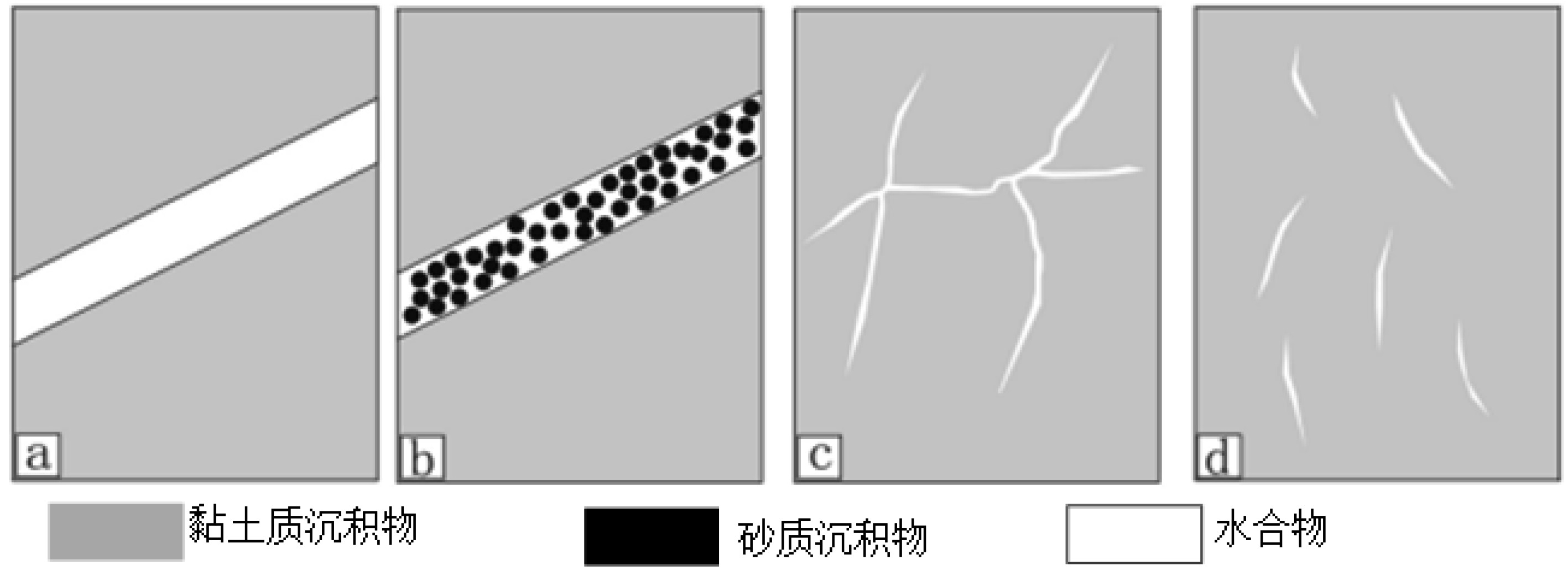
 下载:
下载:
